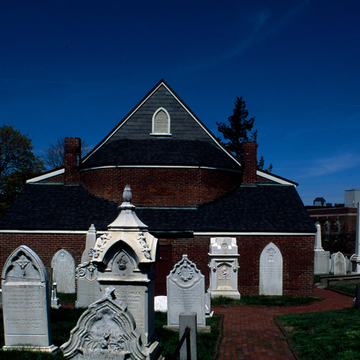Located in the first Catholic burial ground in Boston, St. Augustine Chapel remains the oldest surviving Roman Catholic church in Massachusetts. The Right Reverend John Cheverus, first Catholic bishop of Massachusetts, founded the cemetery in 1818 as a burial site for his friend and helpmate the Rev. Dr. Francis Matignon. One year later, Bishop Cheverus added the brick mortuary chapel to mark the site of Matignon's grave. Cheverus's successor, Bishop Benedict Fenwick, expanded the chapel in 1831. The
You are here
St. Augustine Chapel and Cemetery
1818–1819. 181 Dorchester St.
If SAH Archipedia has been useful to you, please consider supporting it.
SAH Archipedia tells the story of the United States through its buildings, landscapes, and cities. This freely available resource empowers the public with authoritative knowledge that deepens their understanding and appreciation of the built environment. But the Society of Architectural Historians, which created SAH Archipedia with University of Virginia Press, needs your support to maintain the high-caliber research, writing, photography, cartography, editing, design, and programming that make SAH Archipedia a trusted online resource available to all who value the history of place, heritage tourism, and learning.


